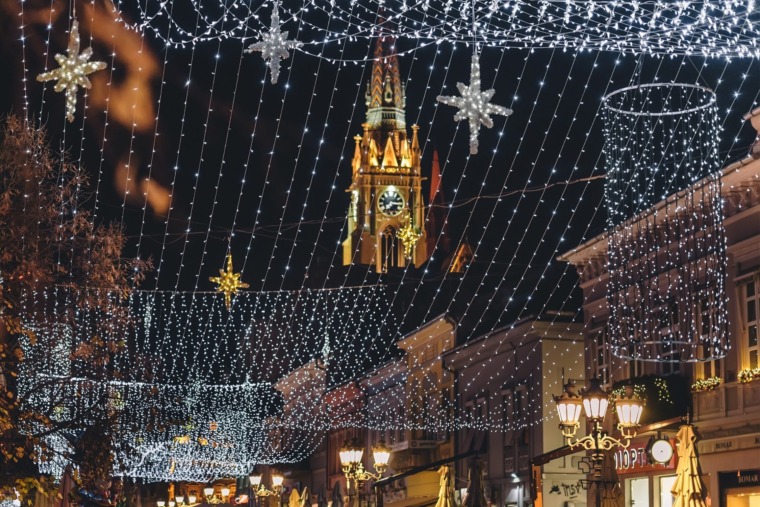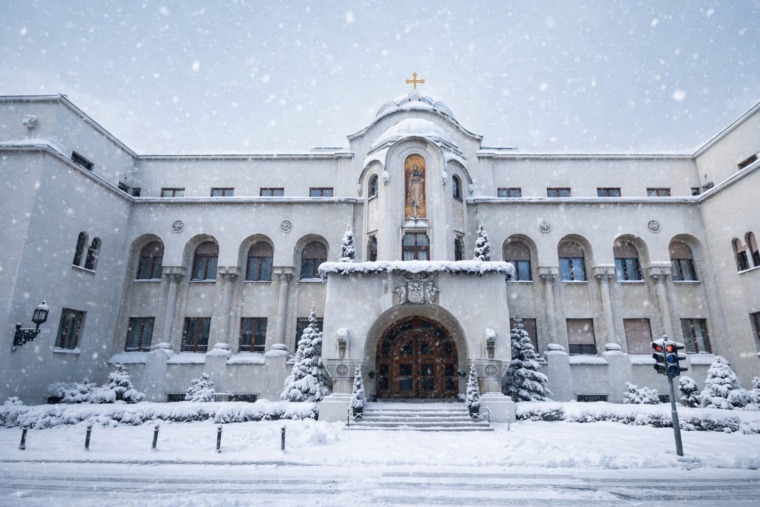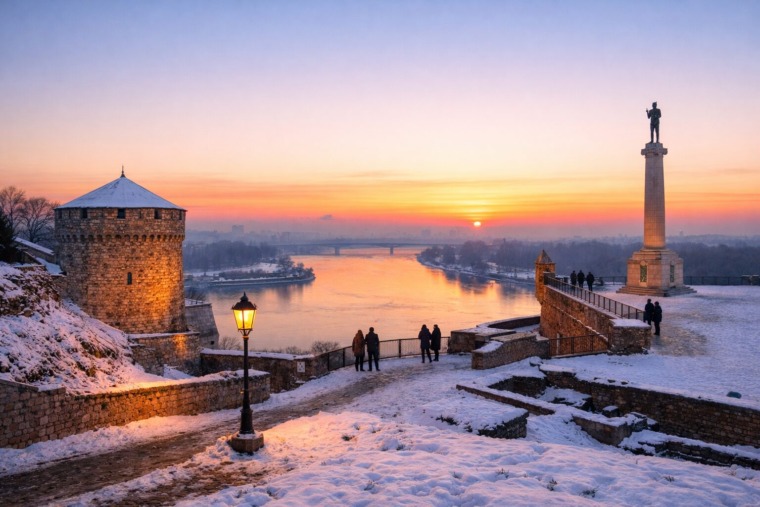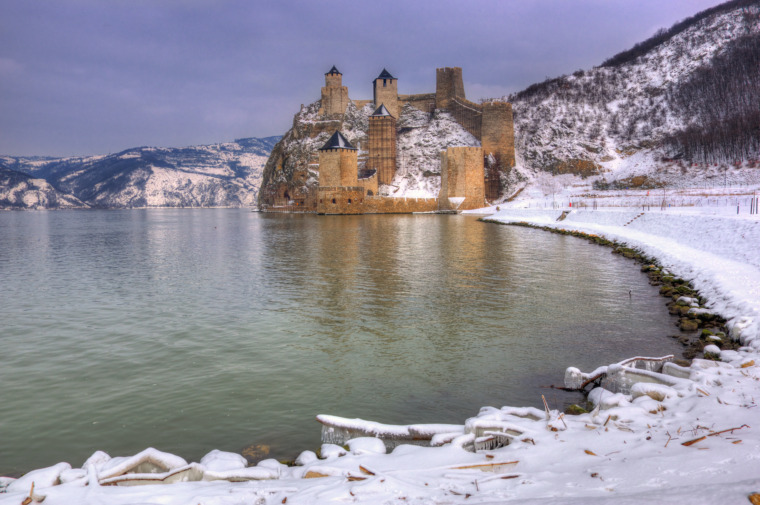
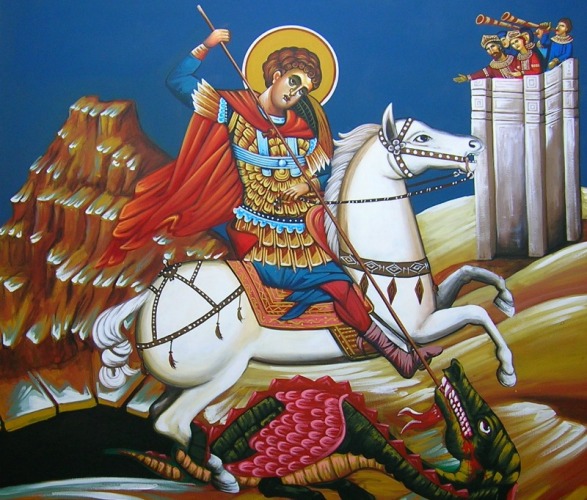
When we think of fairytales, fables and folk stories, our thoughts inevitably drift to dragons. Ferocious, fearless and fire-breathing dragons. And we would be right. Anywhere but in Serbia.
Unlike the malicious dragons spoken about in Western cultures, Serbian dragons are quite different. In Serbian folklore, dragons are good creatures that help people. Dragons in Serbian myths and legends are brave defenders of the Serbian people, lands and skies.
Even more interestingly, Serbian dragons are sometimes even people!
 Yes, you read it correctly – people. You must be wondering who these dragons … erm… people are? And how did they become dragons? In order to answer the first question, we have to answer the second one first.
Yes, you read it correctly – people. You must be wondering who these dragons … erm… people are? And how did they become dragons? In order to answer the first question, we have to answer the second one first.
So let’s discuss the origin of dragons in Serbian folk tales. There are three main theories.
The first tells us that dragons are animals, usually fish, birds or serpents. These animals become dragons because they live so long, usually a hundred years or so.
According to the second theory, dragons fell all over the Balkans many centuries ago in a sort of meteor shower. Some of them fell in the rivers Danube, Timok and Pek, while others fell in forests and mountains. Those who fell in rivers took the appearance of male mermaids with big round eyes, wide noses and long canine teeth. Those who had fallen in forests inhabited big old trees and look like serpents with wings which transform into light only when they fly. Those dragons which landed in mountains inhabited caves and look similar to the tree dwelling dragons.
The third, and most prominent, theory in Serbian fables and folk stories speaks of mythical ancestors in form of mysterious dragons which slept with women. These women later gave birth to “zmajevita” or dragon-like children. These half-human half-dragon children, oftentimes, possessed unworldly powers which they inherited from their fathers. These remarkable capabilities varied from person to person, but all dragon people had the power to leave their body whenever they wanted, called the power of “different souls”.

However, dragons in Serbian folk tales, weren’t only lustful shapeshifters, but, as we have already mentioned, defenders of everything the Serbian folk held dear. These good dragons usually had various enemies, from evil dragons to evil conquerors.
The dragons’ worst enemies were beings called Ala, Azdaja and Lamija. These were like their evil counterparts, resembling more the traditional image of a dragon. In Serbian folklore, these (usually) three-headed beasts, devoured people, took maidens, guarded lakes or brought storms, wind, and other bad weather that ruined crops. They oftentimes took form of maidens themselves so as to seduce the hero i.e. the dragon.
In other cases, the Serbian dragons’ enemies were other people, most often historical figures. And this is where we come to the answer of who the dragons in Serbian history, in fact, were. Some of the most prominent dragon people were the Despot Stefan Lazarevic, Despot Vuk Brankovic called Zmaj Ognjeni Vuk (or, roughly translated, the Fiery Wolf Dragon), Stojan Cupic called Zmaj od Nocaja (the dragon of Nocaj) and Vasa Carapic called Zmaj od Avale (the dragon of Avala). Other heroes with dragon-like capabilities included Milos Obilic, Banovic Strahinja, King Marko and Ljutica Bogdan.
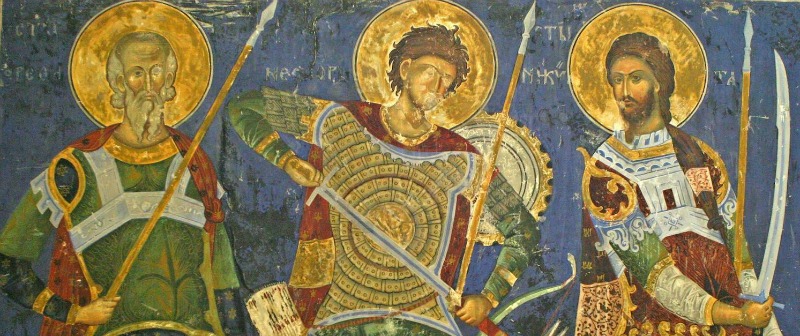
Despot Stefan Lazarevic (1377-1427) was the son of the famous Knez Lazar, the man who led the Serbian army into the fateful battle with the Ottomans in 1389 at the Battle of Kosovo. However, the popular belief was that his actual origins were from the dragon of Jastrebac, who seduced the wife of Knez Lazar, kneginja Milica. Regardless of Stefan’s defeat at the final battle, his other battles against the Turks are described as fearsome victories, which could be led only by – you guessed it – a dragon.
Another interesting fact is that this legend morphed into an epic poem, in which Zmaj Ognjeni Vuk, who was in fact a historical figure called Despot Vuk Brankovic (1471-1485), killed the dragon of Jastrebac for having an affair with Kneginja Milica.
So, in the end, we come to the conclusion that, whether you believe in dragons or not, some of them did really exist. In Serbia, at least…
Author: Maša Maksimović
Related Articles


From Culture to Sport: The Moments That Shaped Serbia in 2025
December 27, 2025
10 Dishes That Must Be on a Serbian New Year’s Table
December 24, 2025
Tourist Holiday Guide to Serbia: Tips, Traditions & What to Expect
December 20, 2025